As an Amazon Associate I earn from qualifying purchases.
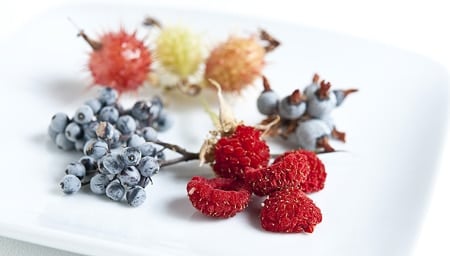
My friend Josh and I recently went up to the Sierra in search of berries. We’d scoped out some Sierra currants and gooseberries earlier this summer, and this was our trip to clean up on these berries. We did, and got a couple of surprises in the process.
High up — 6,500 feet or higher — there are still lots of wildflowers in bloom, and the many permanent mountain springs create little oases of lushness in an otherwise dusty environment. The berries are most often found near these springs. Josh wanted to collect elderberries, which are just now coming on strong up there. Me? I wanted to collect the mysterious Sierra currant and Sierra gooseberry, two fruits I’d never eaten before.
Back in June, we’d found lots of bushes, but they were still in flower.
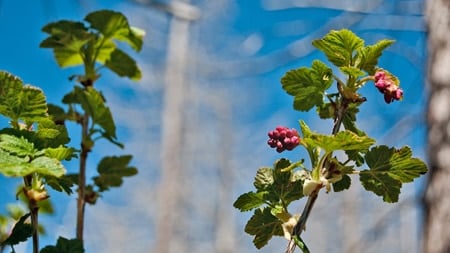
Those pretty magenta flowers ripen into a deep blue currant, distinguishable by a frosty bloom — and the fact that it seems to have five o’clock shadow.
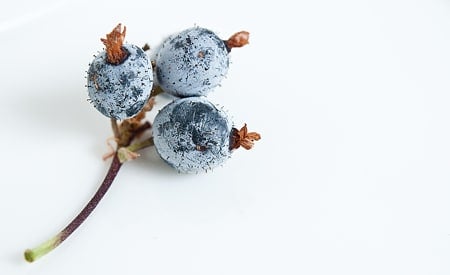
I’d read about these currants, and different authors have different opinions about this berry: Some say they are delicious, others insipid. We tasted some on the bush, and found them,well, OK. Definitely edible, so long as you take the brown corpse of the flower off the end of the berry. A little mealy, no acid to speak of, but reasonably sweet.
All in all, though, the Sierra currant is a dud. I’d happily eat it as a trail nibble, or if I were in trouble, but I will not be picking them again. If you do want to play with these currants, be sure to pick off the dead flower bits first.
Lots of other currant species live in America, however, and I hope to find them soon. There is a Western golden currant out there that is reportedly fantastic — only I’ve never found a single bush. Anyone ever seen one? What about experience with other wild currants? Let me know.
All was not lost, however. Living among those Sierra currants were low-growing Sierra gooseberries. The plants are cousins, and share a very similar leaf — like a ridged, toothed maple leaf. Big difference between currants and gooseberries? Currants grow in clusters on branches with few or no spines. Gooseberries grow singly, and both the fruit and the bushes are spiky. Some more than others.
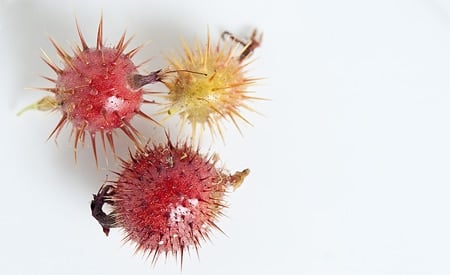
You tough enough to eat these bad boys?
Lemme tell ya, picking these gooseberries absolutely requires leather gloves. Those are real spines that really hurt. What you see in the picture above are the three stages you want to pick gooseberries in: Thinking about getting ripe (note the berry is yellow, not green), almost ripe, and full-on zaftig ripe.
We found some plants laden with the spiky fruit, which I collected with gusto. Just the aroma alone was intoxicating. Sierra gooseberries smell sorta like Sweet Tarts candy. Sharp, fruity and very sweet. Josh and I broke open a couple berries to get at the pulp inside. Delicious! Just the like the domestic gooseberries I used to grow when I lived in Fredericksburg, Virginia.
[on_ad]
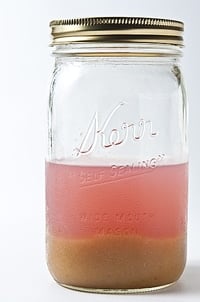
But how to deal with those spines. Boy howdy are they nasty! I thought back to the manzanita berries I’d been playing with recently: They were best briefly boiled, crushed with a potato masher and allowed to steep for a long time.
I did the same with the gooseberries. I covered them with water, boiled it for 2-3 minutes, turned off the heat and mashed them with the potato masher. I let the mash cool to room temperature and then poured it into a plastic container to steep in the fridge for several days — you don’t need to wait several days, but I was busy with other things.
I highly recommend you go looking for your native gooseberries — one species or another lives in most every state; I used to collect the Eastern prickly gooseberry when I lived in Minnesota. Once you get them home, if they are too spiny to eat raw, follow these instructions on how to process gooseberries.
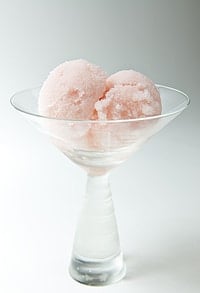
What do you do with gooseberries? I am contemplating making a pie filling from the tan pulp you see at the bottom of the jar; it’s tasty, if unappealing in color. But the pink juice, which is a brilliant scarlet when you use ripe berries, taste like liquid gold. It will need a little sugar to drink straight, or you can make a syrup from the juice by heating it gently with an equal volume of sugar.
Use the syrup on pancakes, over ice cream, or you could make one helluva Bellini by mixing it with sparkling wine.
Or, you could do as I did, and make gooseberry sorbet. Gooseberries have quite a bit of acid to them, so they did not seem right for ice cream. But they were perfect in sorbet — bright, a pretty pale pink, and refreshing.
Flush with gooseberries and elderberries, We drove around looking for other likely places to forage. “What’s that?!” Josh said as we drove by some bushes. I slammed on the brakes and pulled over.
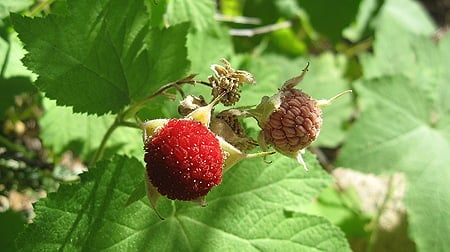
Thimbleberries! Booyah! There is nothing like a thimbleberry. A cousin of the raspberry, it is more delicate, more deeply flavored, more perfect. Raspberry’s beauty is mortal. Thimbleberries are the fruit of Aphrodite.
I picked as many as I could, which is not easy. Thimbleberries are so delicate that they crush with even the slightest pressure. Best bet is to pop off the whole end of the plant so you can ease the berry off its base at home.
Yes, I know people make thimbleberry jam. Or cobbler, or whatever. But sometimes something is so wonderful you want to hide in a corner where no one can see you, popping one berry into your mouth after another — your eyes closing involuntarily — savoring every molecule before it’s gone. Thimbleberries are like that. Eat them plain.
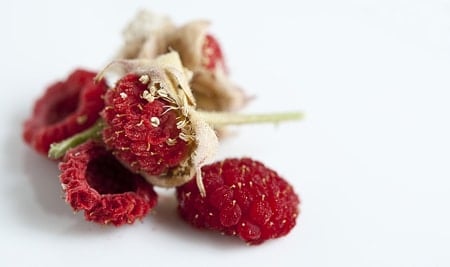
UP NEXT: Out on the Coastal Range. I’m your huckleberry…
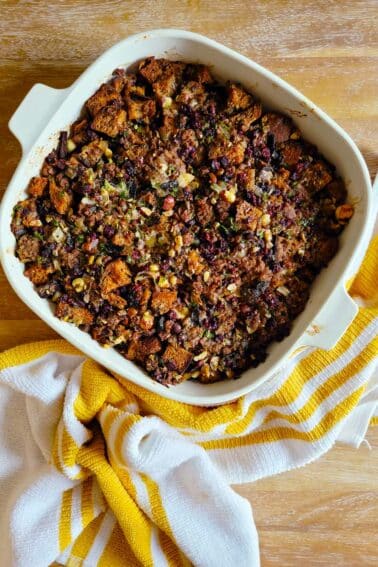
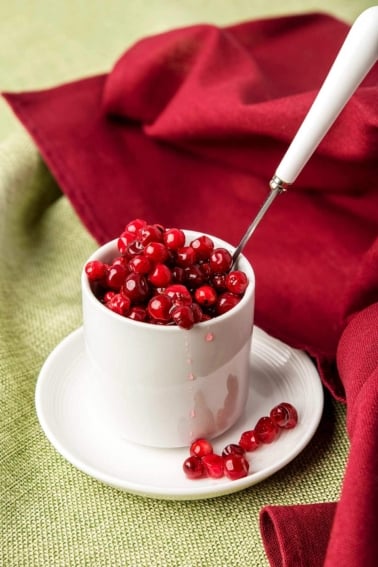


Our dad worked for the Forest Service in the Sierras west of Fresno, CA. In the autumn our parents would take us out with leather gloves to harvest elderberries and gooseberries in the Dinkey Creek area. Our mother would wash them, simmer them in a big pot to release the juice, and make separate batches of gooseberry and elderberry jelly. If I recall the elderberries were quite bitter raw, and didn’t have the flesh to make a jam. The gooseberry spines were also not suitable to be made into jam either. I really miss that jelly, because our mom passed away and I haven’t had it since.
There are black raspberries growing in Kings Canyon and Yosemite! Found a lot of em walking along the first few miles of the Lower Paradise Valley trail in KC. So sweet! So much more flavorful than regular raspberries!
I lived in the forest of the high northern Sierras. Not once did I use gloves to pick and eat wild gooseberries. The thimble berries, well, come spring time, best be watching every day to catch them when they are ripe. If one doesn’t catch them as soon as they are ripe, the berries will be gone within 2 days. The wild animals will devour them. Manzanita berries are also absolutely delicious. The bears love them.
In my town of Yakima, WA there are so many Western golden currants along the yakima river it is crazy. So if you are still looking for those Western golden currants, you should go there. I also recall seeing Western golden currant in Missoula, MT.
Hank, look for them in drainages in the Bald Mountain area above Oroville. I found many mats there spread over a wide area. If you go to the Bald Mountain trailhead and walk 20 yards up the trail, you will find your first two in the center of the dry creek bed. Once youve gotton an eye for them go north to the Link rd and take a right on the dirt road across from it. You should be able to spot a few mats in the gullies along that road.
Colleen, these arent for you I don’t think. They are very, very small fruits and you loose about 50% of what you could have due to them dropping to the ground with the slightest jostle. They are really very frustrating to pick. You are welcome to try it but I am a very persistant person and even I become faily exasperated with these. Here’s a tip though: Pick the dry ones too, as the moisture from the good ones seem to rehydrate the dry ones back to their original glory. And don’t forget to smell your bag for motivation from time to time. The smell is positively intoxicating.
I live in NW Nevada County at 2400 feet and this year I found a wild berry I had not seen before. Apparently edible, it ripens in Aug-Sept. I can add a photo to see if anyone can identify it…
Hi Mike, I’d love a hint where you’re picking them. I go over to the coast to pick mine, but would rather pick closer to home. I live in Gridley but visit the foothills up here.
35 years ago, I used to pick gooseberries up near Ice House. Had a great spot…acres of bushes. There was also a yellow variety I picked too…spiny, just like the red ones. I finally found a new spot a few weeks ago in the foothills up here. I’m looking forward to them ripening. Hank, I love what you’re doing…fun and delicious. The secret to picking spiny gooseberries is to put a cup or bowl under the berry, flip a fork over so that the tines are convex, slide the tines between the berry and the stem and just pop them off. Makes picking so much quicker and pain free.
I
Huckleberries do grow in the Sierras. I live in Butte County and have found quite a few. Some I have not yet identified to species, but are 100% Vaccinium. There are also Service Berries and the very Blueberry-like Bilberry. The more common Huckleberry I find is Vaccinium Shastense subsp. Nevadense. It is a short bush that grows in large mats almost exclusively in various drainages. It’s fruit is small, intense and smells/tastes like Blueberries on steroids. The fruit is dark purple when ripe and the stem stays attached very firmly to the fruit (Unique) and can be frustrating to pick as the slighted jostle will drop the fruit to the ground.
Mike: Interesting! Thanks for that, I will look for them. What elevation?
Are there any berries still growing (and edible?)
I’d like to see if I can grab some when I go up this week.
I live inCalifornia and I’m thinking that the roads and small back roads are covered I. elderberries but I’m not sure. I want to pick and eat them but I’m afraid, they are abundant and growing everywhere! Who can help me so I can start using them if they are undeed good to eat. This will be my very first picking wild food.
I pick wild gooseberries with a used food can- like green beans, corn-,after empty & washed. I take a old fashioned beer bottle opener- better known as a church key?!—perforate the edge of one side with opener to make it jagged on the edges. Take your bucket & “picker”( the jagged can); find your bushes before the bears do & draw the can along the underneath of your berry limb. They fall into can! Dump into bucket! A full bucket nets you plenty for fresh pancake syrup & jam. I used to make it every year. Kids are grown so don’t do it so much anymore. Bith jam & syrup are delicious. The berries have lots of natural oectin so you don’t need pectin unless you want an easier, faster way. I don’t recommend using pectin to make syrup. Just juice & suger!
Does anyone know if huckleberries grow in the Sierras? My husband is from Western Montana and sorely misses his huckleberries.
Josie: Sorta. They are pretty rare. Go to the Coastal Range and you’ll find them.